The UMIST campus, one of Manchester’s most striking examples of modernist architecture, is under threat of redevelopment after plans were revealed to turn the site into a brand new £1.5billion ‘regeneration hub.’
The UMIST site was built between 1962 and 1968 and was the home for the University of Manchester’s Institute of Science and Technology. This cluster of dashing white modernist structures now only sit to mark the ignition site of Harold Wilson’s ‘white heat of technology.’
After a merger in 2004, the University of Manchester made clear the UMIST campus was surplus to requirements as the university needed a more flexible space for educational affairs.
Now a grand redevelopment project has been unveiled to tend to that. According to the developer’s website, the plan promises to “accelerate growth, partnership and collaboration.”
Christened ‘ID Manchester’, the plans could see the area hacked into a glass maze of ultra-modern offices, apartments and hotels. A similar story.
This newest plan, brought forward by property provider Bruntwood SciTech and accompanied by the excitement of Manchester City Council, is the latest in a string of redevelopment attempts to modernise the area.
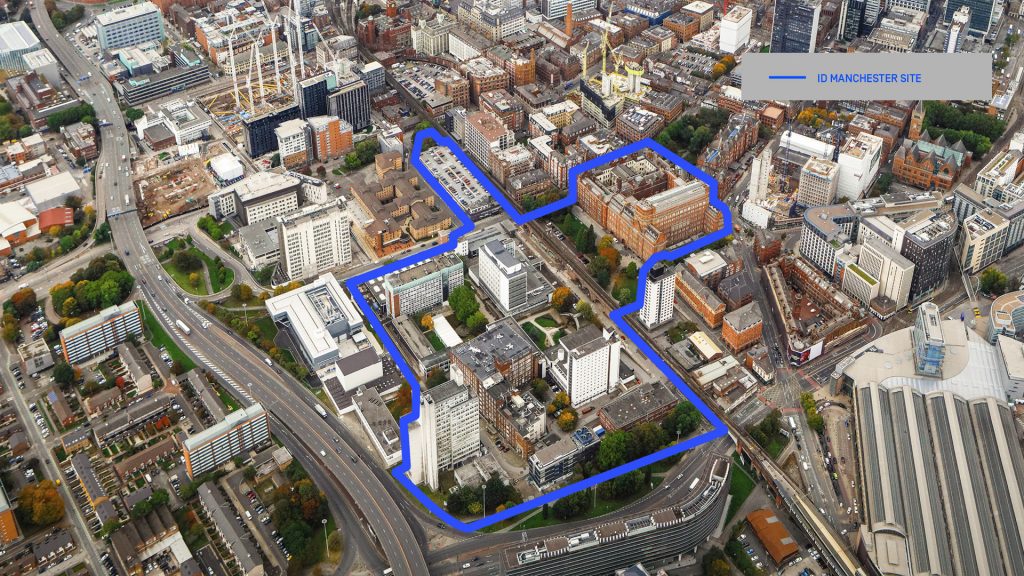
The UMIST site has shrugged off three previous redevelopment plans. All were met by financial difficulties and never materialised. This newest attempt however is seen as most likely to get the green light.
This is to the dismay of some in the city fighting for the importance of modernism, who believe the architectural value of the campus is being overlooked.
Eddy Rhead, co-founder of the Manchester Modernist Society, a group who celebrate 20th Century architecture said: “We believe that there needs to be a reassessment of the site in terms of its heritage value. That area is seen as a blank canvas. It’s not a blank canvas [as] there are a couple of important buildings on that site.”
The campus is split down the middle by the railway track running overhead. On one side sits the Sackville Street building, a grand Grade II listed Edwardian structure built in 1895. The other side of the line is where the buildings of the post-war modernist blaze were constructed.
Rhead added: “The proposals that have been put forward focus a lot on the heritage value of the Edwardian building but there seems to be no consideration for the heritage value of the post- war buildings on the south side [or] the listed structure which has kind of been forgotten about, which is a bit naughty.
“So that sums up to me the disregard for the post war heritage of the site.”
The listed structure Rhead is on about is the rather brutal Sculptural Wall which surrounds the modernist buildings. Built in 1966, it was granted Grade II listing in 2011 but it seems clear some developers in the city are neglecting this fact.
“The development plan was very vague”, Rhead said, “but it didn’t fill us with much hope because it did pretty much indicate that the whole site would be cleared, which is a bit worrying for us.
“And I don’t think the replacement for what they’re proposing does anything to improve what is already on there. We’re keeping an eye on them but there are forces at work much bigger than us.
“The City Council are very keen on it [the proposal] and they like the ‘scorched earth’ policy where they just like a cleared site. Lots of developers like a cleared site where they can just start again and that is very worrying for me because it takes no regard for any of the heritage of the site.
“The likelihood is the majority of the buildings will be demolished and there will be a couple retained. That’s the best we can hope for at the minute.”
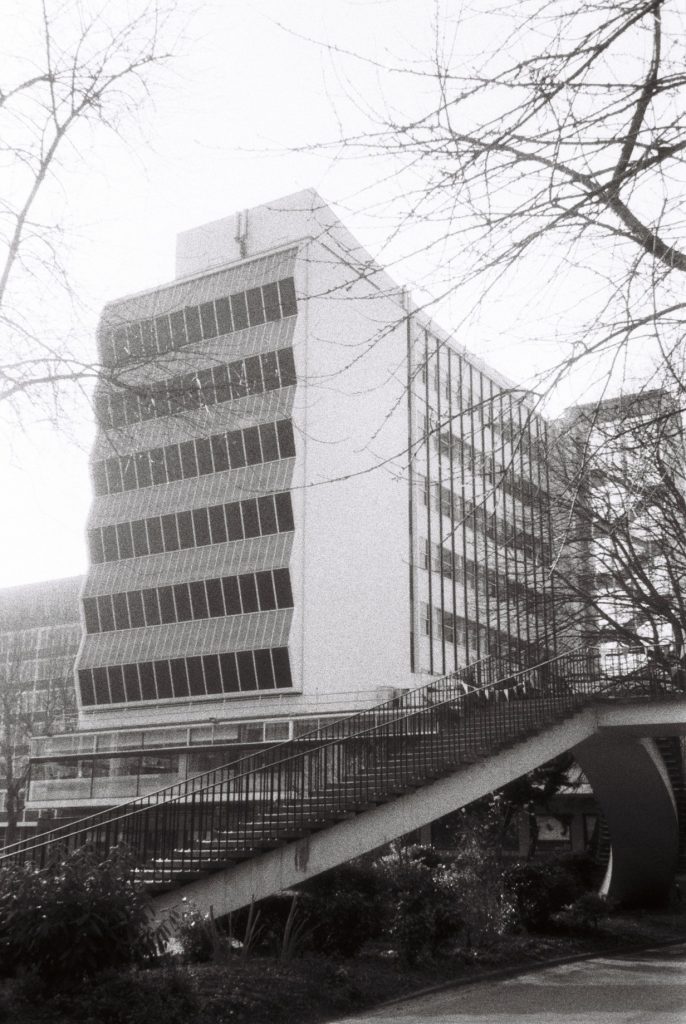
Renold Building on the UMIST campus Credit: Author’s own 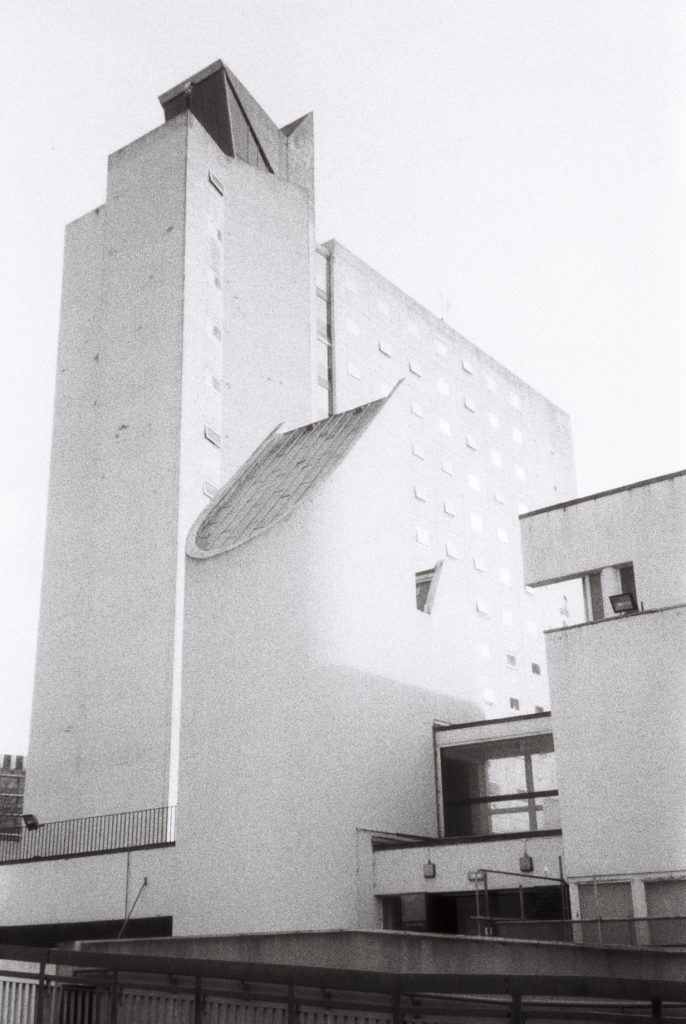
Barnes Wallis Building on the UMIST campus Credit: Author’s own
Hope is not entirely lost yet thought. As Rhead explained, there are some sympathetic ears to modernism on the team behind the proposal at Bruntwood SciTech. And an early rendition of the proposed design for ‘ID Manchester’ had the Renold Building, the main feature of the campus, standing untouched in the centre.
But this seems a mere caveat – for this blinkered narrative of ‘demolish and rebuild’ sung upon the alter of vanity commercialism and sleek glass, rich imperialist titbits and vacuous trinkets is one that Manchester has gotten used to recently.
As Rhead mulled: “post-Covid, let’s have a little thought of how we can make our city better. At the end of the day I just want the best for our city and God-forbid if they should put some social housing on it, or a school or a park but there’s none of that. It is just the same old commercial mixed-use development. It seems just another Spinningfields. Another Circle square. Another Green Quarter.”
Along with representing the blaze of the ‘white heat of technology’, the UMIST campus also represents the boom of higher education in the sixties and seventies which proved a precious educational gateway for those who wouldn’t have before been given the chance. It’s a valuable story Rhead believes – one that needs protecting.
He explained: “You can’t just wipe away periods of history because its commercially unviable or its not in favour at the minute. You’re just going to get a bland, boring city.
“‘The whole is greater than the sum of the parts’ so individually they may not be great but as a group of buildings they tell a very interesting, important story. I think that needs to be addressed before they start going in demolishing everything.
“A lot of time [developers] aren’t interested in the city long term. They just want to put up a building, make some money, sell it on to somebody else then move on. They don’t care about the rich tapestry of the city or even making the city a better place.”
Main image credit: https://www.id-manchester.com/the-vision/
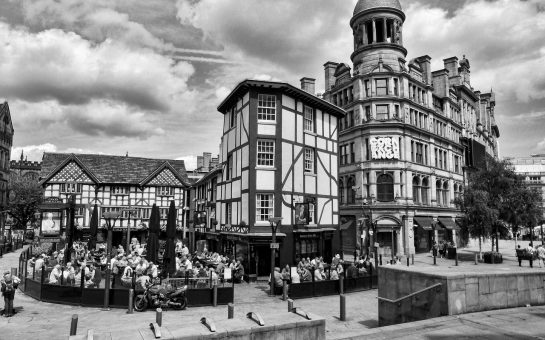

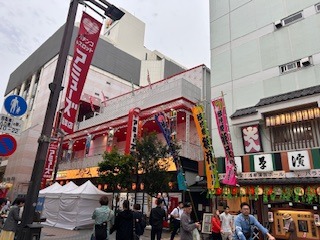

Join the discussion
UMIST is an eyesore and needs to go. How anyone can seriously think the existing buildings are better than what’s being proposed is beyond me.